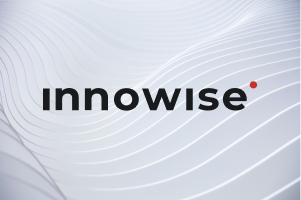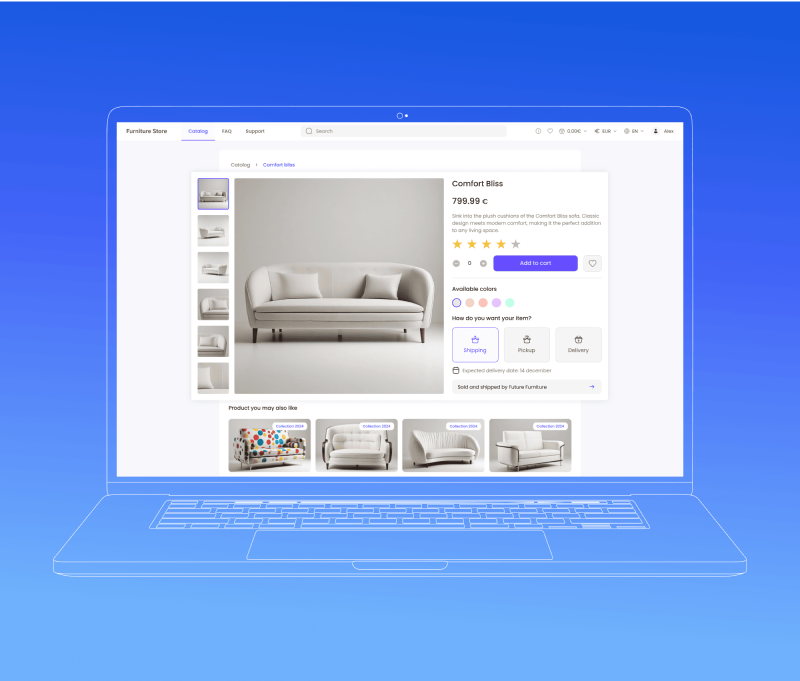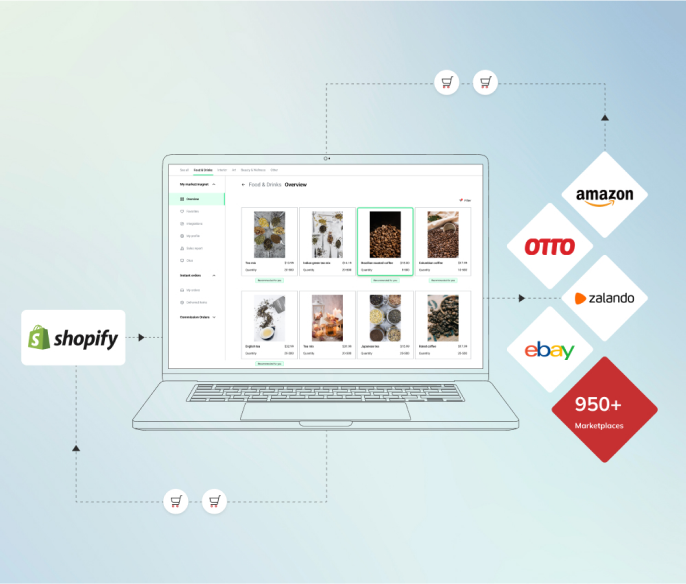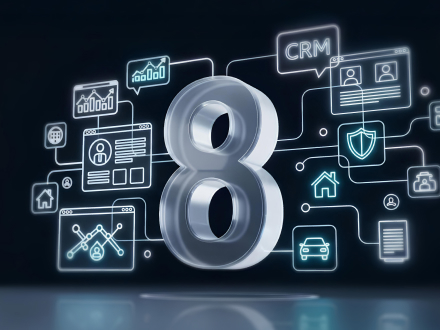Your message has been sent.
We’ll process your request and contact you back as soon as possible.
The form has been successfully submitted.
Please find further information in your mailbox.


With mobile devices generating 64% of digital retail traffic and 87% of shoppers relying on social media to influence their purchases, the stakes for eCommerce companies have never been higher. Peak seasons add even more pressure, as McKinsey highlights that most consumers now rely on retailer websites and apps for holiday shopping. It’s clear that legacy eCommerce platforms are struggling to keep pace with these demands.
To stay competitive, eCommerce websites need scalable, modern platforms capable of delivering fast, smooth, and personalized shopping experiences in an ever-evolving digital marketplace.
Migration may be the answer you’ve been looking for when your current eCommerce platform can no longer support your eCommerce business needs and when it doesn’t provide your customers with the user experience they are expecting. Be it outgrowing a current platform in use, seeking better functionality, or looking for a more affordable option, migration can help you respond to the increasing demands of your business and develop a better experience for your customers.
eCommerce migration is shifting your entire online store, including products, customer data, order history, and more, from one platform to another. It often means upgrading to a more up-to-date or flexible platform that can handle increased traffic, integrate with new tools, and provide better analytics. For example, you might migrate to a more solid inventory management platform or better customer service tools.
eCommerce sites are often the first point of contact with customers, and if it’s not up to par, it can negatively impact both customer experience and business performance. Moving to a new technology platform can help. Let’s highlight the specific problems eCommerce replatforming can address.
The newer platforms offer faster load times, more reliable hosting, and advanced content delivery networks (CDNs) — all of which keeps stores operating at peak performance. This has a direct impact on customer experience, as faster websites lead to higher customer satisfaction and, consequently, higher conversion rates.
First, we assess how eCommerce platform migration will influence your sales, traffic, and customer experience. Our experts pinpoint potential disruptions and build a strategic plan to keep your business moving smoothly during the transition.

Our team helps you understand both the initial price tag and the ongoing expenses, so there are no hidden surprises down the line. We break down all the costs — platform fees, integrations, and ongoing maintenance.

New tech adoption can feel like assembling a puzzle. Your existing eCommerce software needs to fit perfectly with the new platform. Innowise’s team identifies and fixes potential gaps ahead of time so your business operates continuously.

The Innowise team, with extensive experience in data migration, will carefully assess your needs and match you with the engineers best suited to support your eCommerce platform migration.

We help you define the specific features that will address your business needs. The platform will manage your product catalog, speed up order fulfillment, and integrate with marketing tools, optimizing daily tasks.

As your business expands, the right platform should be able to scale smoothly — adding new products, users, and features as needed. We set up your platform for today’s goals, while guaranteeing it’s prepared to evolve with your future needs.

Choose a platform that’s packed with powerful support tools, such as live chat, helpdesks, and more, so your team can provide exceptional service no matter how busy it gets. Let us assist you to make the best choice.

Timing is key! But don’t be bothered, as we’ll help you choose the perfect window — when traffic is low and your business can adapt with minimal disruption.

Before you pack up and move, a thorough audit is essential. Our team will fix broken links, tidy up SEO issues, and resolve any glitches so that when you move to the new platform, it all runs reliably.

Our team carefully selects only the most relevant, up-to-date information to migrate like products, customer data, and more. This lets the new site run faster, look cleaner, and be ready for driving sales just after eCommerce replatforming.

First, we assess how eCommerce platform migration will influence your sales, traffic, and customer experience. Our experts pinpoint potential disruptions and build a strategic plan to keep your business moving smoothly during the transition.

Our team helps you understand both the initial price tag and the ongoing expenses, so there are no hidden surprises down the line. We break down all the costs — platform fees, integrations, and ongoing maintenance.

New tech adoption can feel like assembling a puzzle. Your existing eCommerce software needs to fit perfectly with the new platform. Innowise’s team identifies and fixes potential gaps ahead of time so your business operates continuously.

The Innowise team, with extensive experience in data migration, will carefully assess your needs and match you with the engineers best suited to support your eCommerce platform migration.

We help you define the specific features that will address your business needs. The platform will manage your product catalog, speed up order fulfillment, and integrate with marketing tools, optimizing daily tasks.

As your business expands, the right platform should be able to scale smoothly — adding new products, users, and features as needed. We set up your platform for today’s goals, while guaranteeing it’s prepared to evolve with your future needs.

Choose a platform that’s packed with powerful support tools, such as live chat, helpdesks, and more, so your team can provide exceptional service no matter how busy it gets. Let us assist you to make the best choice.

Timing is key! But don’t be bothered, as we’ll help you choose the perfect window — when traffic is low and your business can adapt with minimal disruption.

Before you pack up and move, a thorough audit is essential. Our team will fix broken links, tidy up SEO issues, and resolve any glitches so that when you move to the new platform, it all runs reliably.

Our team carefully selects only the most relevant, up-to-date information to migrate like products, customer data, and more. This lets the new site run faster, look cleaner, and be ready for driving sales just after eCommerce replatforming.

eCommerce migration is like carefully repotting a growing business. Just as a flower outgrows its pot and needs to be transferred to a larger one to continue flourishing, your eCommerce store may reach a point where its current platform no longer supports growth. You begin by gently removing the store’s “roots” — your products, data, and processes — providing nothing is disrupted. Then, you place everything into a more robust platform, filling the gaps with new tools and features to boost performance. With careful preparation, you create the ideal environment for your business. This is where Innowise and our structured, well-crafted eCommerce replatforming plan can help.

We outline the limitations of your current platform, such as performance issues or lack of scalability, and outline the specific benefits you expect from the new platform.

eCommerce site migration impacts multiple areas of your business, so it’s pivotal to involve stakeholders from relevant departments early on.

Our team considers factors like scalability, ease of use, customization options, integration capabilities, and total cost of ownership.

After thorough research, we help you select the platform that best meets both your current needs and your growth targets.

Our engineers create your current store’s data backup to protect you against data loss during the transition and allow for quick restoration if something goes wrong.

Innowise’s designers and developers craft a site layout with a focus on intuitive navigation, mobile responsiveness, and a visually appealing interface.

We suggest using a data migration service to minimize downtime and help maintain data integrity by transferring your store’s information to the new platform efficiently.

Missing or corrupted data can lead to issues later, so our specialists diligently complete eCommerce site migration processes, keeping your data intact and accurate.

Innowise integrates your preferred checkout solution with the new platform. At this step, we can also implement multiple payment options and simplify checkout navigation.

Before going live, our team checks for broken links, optimizes metadata, and redirects old URLs to their new counterparts to retain search rankings.

Our QA team tests every aspect of your site, including functionality, integrations, and performance across devices.
Final step of our eCommerce migration plan! At Innowise, we guarantee a smooth start, tracking performance and customer feedback while swiftly addressing any issues.

We outline the limitations of your current platform, such as performance issues or lack of scalability, and outline the specific benefits you expect from the new platform.

eCommerce site migration impacts multiple areas of your business, so it’s pivotal to involve stakeholders from relevant departments early on.

Our team considers factors like scalability, ease of use, customization options, integration capabilities, and total cost of ownership.

After thorough research, we help you select the platform that best meets both your current needs and your growth targets.

Our engineers create your current store’s data backup to protect you against data loss during the transition and allow for quick restoration if something goes wrong.

Innowise’s designers and developers craft a site layout with a focus on intuitive navigation, mobile responsiveness, and a visually appealing interface.

We suggest using a data migration service to minimize downtime and help maintain data integrity by transferring your store’s information to the new platform efficiently.

Missing or corrupted data can lead to issues later, so our specialists diligently complete eCommerce site migration processes, keeping your data intact and accurate.

Innowise integrates your preferred checkout solution with the new platform. At this step, we can also implement multiple payment options and simplify checkout navigation.

Before going live, our team checks for broken links, optimizes metadata, and redirects old URLs to their new counterparts to retain search rankings.

Our QA team tests every aspect of your site, including functionality, integrations, and performance across devices.

Final step of our eCommerce migration plan! At Innowise, we guarantee a smooth start, tracking performance and customer feedback while swiftly addressing any issues.
The right eCommerce site migration approach depends on the business’s operational needs and conditions, such as the data volume, real-time processing requirements, and integration complexity. Below are the most common eCommerce data migration methods:
This method involves transferring data manually, usually through spreadsheets or file uploads. While manual transfer is straightforward and doesn’t require technical expertise, it can be very time-intensive and error-prone.
Data transfer can be managed through intuitive tools or apps designed to automate the process, saving time compared to manual methods. However, users may need to intervene at times, particularly when it comes to tasks like data mapping or providing the integrity of the transferred information.
APIs and microservices are perfect for businesses that require smooth, scalable integrations. These technologies allow systems to communicate and exchange data automatically, minimizing human error and boosting efficiency, mainly when dealing with large or intricate datasets.
We have expertise in supporting the leading eCommerce solutions like Adobe Commerce (Magento), Shopify, PrestaShop, WooCommerce, OpenCart, and Shopware.

eCommerce platform migration trends always show significant shifts in business priorities. Most businesses want to migrate away from Magento and PrestaShop, usually due to difficulties in maintaining the store or because it was not scalable.
Shopify is the first choice for eCommerce platform migration thanks to its user-friendly interface, high scalability, and various integration possibilities. Its cloud-based infrastructure requires very minimal technical supervision, meaning that businesses can now focus on growth.
We’ve gone ahead to prepare a comparison table of the best eCommerce platforms, highlighting their key features to help you decide which eCommerce platform type suits your business best.
Platform
Time-to-market
Platform cost
Performance
Scalability
Customization
Shopify
Low
Fast setup with minimal technical effort; ideal for quick launches
Medium to high
There’are various monthly subscription plans
High
Fast, reliable, with robust hosting and built-in caching
Medium to high
Suitable for growing businesses, but scaling may require extra costs
Medium
Limited customization due to proprietary structure
Adobe Commerce (Magento)
High
Complex setup, especially for customizations
Medium to high
Magento Open Source is free, but Adobe Commerce requires a license
High
Excellent but requires proper optimization and hosting
High
Great for complex stores, but scaling requires strong hosting and technical expertise
High
Ideal for businesses with unique needs, but requires technical expertise
WooCommerce
Medium
Requires hosting setup and plugin configuration but faster than Magento
Low to medium
Free WordPress plugin; costs arise from hosting, themes, and extensions
Medium
Performance depends heavily on hosting and the number of plugins
Medium
Suitable for growth, but large stores may require extra resources
High
Highly customizable with plugins, themes, and code-level tweaks
PrestaShop
Medium
Moderate setup time; depends on customizations and hosting
Low to medium
Open-source and free, with costs for hosting and paid modules
Medium
Great for small to medium stores; needs tuning for high traffic
Medium
Works well for small to medium businesses
High
Open-source with wide customization options
OpenCart
Medium
Relatively straightforward for basic stores; customization takes longer
Low to medium
Open-source and free, with costs depending on hosting and extensions
Medium
Fast for small stores; slows with large catalogs or heavy customization
Medium
Suits smaller stores; larger ones may face database and performance limits
Medium to high
Customizable but less feature-rich compared to Magento
Shopware
Medium to high
Shopware Cloud is faster, while self-hosted versions take more time to configure and launch
Medium to high
Shopware Cloud has subscription fees; self-hosted versions require a license fee
High
Scalable, handles large catalogs; performance varies by hosting type
High
Built with scalability in mind, especially for enterprise-level stores
High
Offers a range of customization options for both cloud and self-hosted solutions
eCommerce platform migration is a significant step for any business, involving technical challenges and strategic decision-making. At Innowise, we believe a thoughtful, phased approach to migration is essential for minimizing disruptions, safeguarding data, and positioning your business for future growth. Here are the examples of how we helped our clients implement this strategic step.
The client struggled with outdated infrastructure, having both Magento 2 CE and Shopware 5 stores, which caused maintenance delays and data inconsistencies. Innowise migrated an online store from Shopware 5 to Magento 2 CE, reconstructing the back-end, front-end, and storefront UI. As a result, our client simplified financial reporting and maintenance efforts, while customers retained the familiar experience of the website.

Our client’s platform, AfterBuy, couldn’t support the growing number of sales channels, requiring inefficient manual updates. We migrated their eCommerce operations from AfterBuy to ChannelEngine, centralizing product data, order histories, and inventory. This migration reduced manual data entry, boosting efficiency and enabling strategic focus.

Navigating eCommerce replatforming doesn’t have to be overwhelming. With the right partner and a strategic plan, you can achieve growth, improve user experiences, and future-proof your business. Ready to explore the possibilities? This guide for an eCommerce migration provides helpful tips but lacks the depth needed to address all the important specifics. Let’s discuss how we can support your migration journey.













Your message has been sent.
We’ll process your request and contact you back as soon as possible.

By signing up you agree to our Privacy Policy, including the use of cookies and transfer of your personal information.